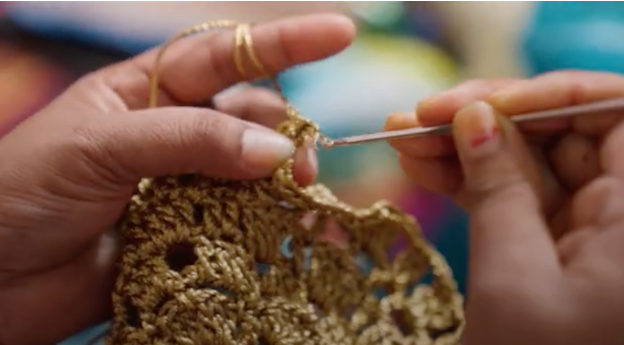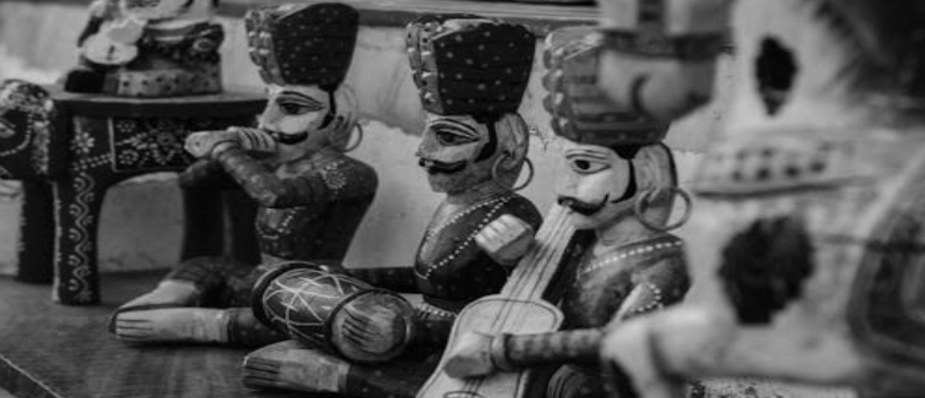Unveiling The Enigma Of Southeast Asian Textiles
Feb 01, 2024 | Purbasha Giri
 Spanning a mesmerising mosaic of terrains and cultures, Southeast Asia extends an invitation to delve into its textile saga—a tale stitched by artisans across generations. From the lively markets of Thailand, where colours pirouette in harmonious rhythm, to the tranquil landscapes of Cambodia, each country contributes a thread to this rich and diverse narrative. Join us in uncovering the layers of Southeast Asian textiles, a unique story interwoven with the essence of tradition, culture, and sustainability—a narrative poised to stand out in the vast expanse of the digital realm.
Spanning a mesmerising mosaic of terrains and cultures, Southeast Asia extends an invitation to delve into its textile saga—a tale stitched by artisans across generations. From the lively markets of Thailand, where colours pirouette in harmonious rhythm, to the tranquil landscapes of Cambodia, each country contributes a thread to this rich and diverse narrative. Join us in uncovering the layers of Southeast Asian textiles, a unique story interwoven with the essence of tradition, culture, and sustainability—a narrative poised to stand out in the vast expanse of the digital realm. The ancient history of Southeast Asian textiles:
The ancient history of Southeast Asian textiles is a fascinating journey that spans thousands of years, marked by intricate techniques, diverse materials, and rich cultural influences.
1. Prehistoric Period:
Materials:Natural fibers such as bark cloth and plant-based fibers were used by prehistoric communities for clothing.
Techniques: Basic weaving and plaiting methods were employed to create simple garments.
2. Funan and Chenla Kingdoms (1st to 9th Century):
Materials: Cotton became a prominent textile material alongside locally available plant fibers.
Techniques:Basic weaving techniques evolved, with communities producing textiles for both utilitarian and ceremonial purposes.
3. Khmer Empire (9th to 15th Century):
Materials:Introduction of silk alongside continued use of cotton; intricate patterns and designs became more elaborate.
Techniques: Advanced weaving techniques, intricate embroidery, and the use of gold and silver threads in royal garments.
4. Srivijaya Empire (7th to 14th Century):
Materials: Cotton and silk textiles were prevalent, and trade routes facilitated the exchange of textile goods.
Techniques: Batik, a wax-resist dyeing technique, is believed to have originated in this period.
5. Majapahit Empire (late 13th to early 16th Century):
Materials:Continued use of cotton and silk; introduction of the use of gold leaf in textiles.
Techniques:Advanced dyeing and weaving techniques; production of high-quality textiles for both local use and trade.
6.Ayutthaya Kingdom (14th to 18th Century):
Materials:Silk weaving flourished, and the kingdom became known for its exquisite textiles.
Techniques: Brocade weaving, gold and silver thread embroidery, and intricate patterns influenced by Indian and Chinese styles.
7. Vietnam (Dai Viet) - Ly, Tran, and Le Dynasties (11th to 18th Century):
Materials: Cotton and silk textiles were common; silk production and sericulture were promoted.
Techniques: Dong Ho woodblock printing, intricate silk brocades, and indigo dyeing techniques were developed.
8. Colonial Era (19th to mid-20th Century):
Materials: Introduction of industrial methods and synthetic fibres during the colonial period.
Techniques:Traditional handwoven textiles coexisted with the rise of mechanised mills introduced by European colonisers.
9. Post-Independence (mid-20th Century onwards):
Materials:A blend of traditional fibres and modern synthetics; efforts to revive and preserve traditional weaving techniques.
Techniques: Revival of traditional weaving practices; continued adaptation of traditional designs in contemporary fashion.
The ancient history of Southeast Asian textiles reflects a dynamic interplay of cultural, economic, and technological influences. The region's textiles have not only served practical purposes but have also been integral to the cultural identity and social fabric of the diverse communities that call Southeast Asia home.
How trade and other factors influenced the textile of Southeast asia:
Trade and various other factors have played a crucial role in shaping the textile traditions of Southeast Asia. The region's vibrant history of commerce, cultural exchanges, and diverse influences has contributed to the unique tapestry of Southeast Asian textiles. Here's a closer look at how trade and other factors have influenced textile production in Southeast Asia:
1. Trade Routes and Cultural Exchange:
Maritime Silk Road: Southeast Asia has been a vital part of the maritime Silk Road, connecting trade between China, India, the Middle East, and Europe. This facilitated the exchange of raw materials, techniques, and designs, influencing the textile traditions of the region.
2. Introduction of New Materials:
Silk and Other Luxurious Fibres: Trade with China and India introduced luxurious materials such as silk to Southeast Asia. This influenced the development of high-end textiles and contributed to the region's reputation for producing intricate, finely woven fabrics.
3. Spread of Textile Techniques:
Ikat, Batik, and Tie-Dye:Trade networks allowed for the dissemination of textile techniques like ikat, batik, and tie-dye across Southeast Asia. These methods became integral to the region's textile identity, with each culture adapting and incorporating them into their traditions.
4. Cultural and Religious Influences:
Hindu-Buddhist Traditions:The spread of Hindu-Buddhist traditions from India influenced the use of textiles in religious ceremonies and courtly attire. Elaborate textiles adorned with intricate patterns and symbolic motifs became a hallmark of cultural identity.
5. Colonial Impact:
European Colonisation: European colonial powers, such as the Dutch, Portuguese, Spanish, and British, influenced Southeast Asian textiles through the introduction of new materials, dyes, and weaving techniques. The colonial period marked a fusion of local traditions with Western influences.
6. Royal Patronage:
Courtly Textile Production: Trade wealth often found expression in textile production, with rulers and aristocrats commissioning luxurious fabrics. This led to the creation of intricate textiles for ceremonial purposes, contributing to a royal textile tradition.
7. Local Materials and Expertise:
Natural Fibres: The availability of abundant natural fibres, including cotton and silk, shaped the choice of materials in textile production. Local expertise in cultivating and processing these fibres became integral to the textile industry.
8. Cross-Cultural Blending:
Border Regions: Southeast Asia's border regions, influenced by neighbouring cultures, witnessed the blending of styles and techniques. This cross-cultural interaction enriched the textile traditions in these areas.
9. Ceremonial and Ritual Significance:
Symbolic Trade: Textiles became valuable trade items and gifts, exchanged during diplomatic relations and cultural events. The symbolism attached to certain textiles made them significant in rituals and ceremonies.
10. Modernization and Globalization:
Technology and Design Influences: Modernization and globalisation have brought new technologies, designs, and consumer preferences to the forefront. Contemporary Southeast Asian textile producers often adapt traditional techniques to meet modern demands.
11. Revival Movements:
Cultural Preservation: In response to globalisation, there has been a resurgence of interest in preserving traditional textile techniques. Revival movements aim to safeguard cultural heritage and empower local communities.
Trade and its associated factors have not only impacted the materials and techniques of Southeast Asian textiles but have also woven a complex narrative that reflects the region's historical, cultural, and economic interconnectedness.
TEXTILES OF SOUTHEAST ASIA:
Recommended








